
Roxbury is a town in Washington County, Vermont, United States, created by Vermont charter on August 6, 1781. The population was 678 at the 2020 census.

Whitewater State Park is a state park of Minnesota, United States, preserving a stretch of the Whitewater River surrounded by rocky bluffs. It is located in Winona County in the southeastern blufflands area of the state. The 2,700-acre (11 km2) park features scenic overlooks and trout fishing in the spring-fed Whitewater River and Trout Run Creek. It has about 300,000 visitors annually, and is located 7 miles (11 km) north of St. Charles on Minnesota State Highway 74, which runs through the park.
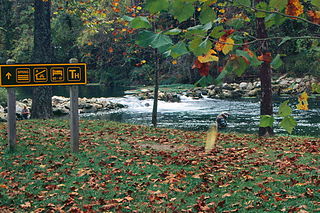
Bennett Spring State Park is a public recreation area located in Bennett Springs, Missouri, twelve miles (19 km) west of Lebanon on Highway 64 in Dallas and Laclede counties. It is centered on the spring that flows into the Niangua River and gives the park its name. The spring averages 100 million gallons of daily flow. The park offers fly fishing, camping, canoeing, hiking, and other activities.

Backbone State Park is Iowa's oldest state park, dedicated in 1919. Located in the valley of the Maquoketa River, it is approximately three miles (5 km) south of Strawberry Point in Delaware County. It is named for a narrow and steep ridge of bedrock carved by a loop of the Maquoketa River originally known as the Devil's Backbone. The initial 1,200 acres (490 ha) were donated by E.M. Carr of Lamont, Iowa. Backbone Lake Dam, a relatively low dam built by the Civilian Conservation Corps (CCC) in the 1930s, created Backbone Lake. The CCC constructed a majority of trails and buildings which make up the park.

Leaburg is an unincorporated community in Lane County, Oregon, United States located on the McKenzie River and Oregon Route 126 east of Walterville and west of Vida.
The Neosho National Fish Hatchery is the oldest federal fish hatchery in operation today. It is one of 69 fish hatcheries operated by the US Fish and Wildlife Service. It was established in 1888.

The Lake Fish Hatchery Historic District comprises nine buildings built between 1930 and 1932 by the U.S. Fish and Wildlife Service in the National Park Service Rustic style. The buildings exhibit a consistency of style and construction, with exposed gable trusses and oversized paired logs at the corners, all with brown paint. The district is located on the shore of Yellowstone lake near the Lake Hotel The hatchery was established to provide Yellowstone cutthroat trout eggs for state and federal hatcheries outside Yellowstone.

The Old McKenzie Fish Hatchery was used to raise trout and salmon for release into the McKenzie River in western Oregon in the United States. It is located near the unincorporated community of Vida in Lane County. The hatchery is closed, however, the historic site is now a county park. It is also listed on the National Register of Historic Places.
Roaring River State Park is a public recreation area covering of 4,294 acres (1,738 ha) eight miles (13 km) south of Cassville in Barry County, Missouri. The state park offers trout fishing on the Roaring River, hiking on seven different trails, and the seasonally open Ozark Chinquapin Nature Center.
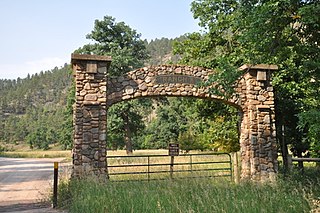
Ranch A, near Beulah, Wyoming, was built as a vacation retreat for newspaper publisher Moses Annenberg. The original log ranch structures in Sand Creek Canyon were designed in the rustic style by architect Ray Ewing. The principal building, a large log lodge, was built in 1932. Other buildings constructed at the time included a garage with an upstairs apartment, a barn, a hydroelectric power plant, stone entrance arches and a pump house. The lodge was furnished with Western furniture and light fixtures made by noted designer Thomas C. Molesworth. Many of these furnishings, among the first of Molesworth's career, are now the property of the state of Wyoming and are in the Wyoming State Museum.

The Prairie Creek Fish Hatchery near Orick, Humboldt County, California was one of the first small local fish hatcheries developed to improve the area's sport and commercial fishing, and is one of only three remaining hatcheries built in California from 1871 to 1946.
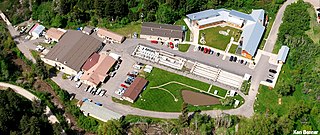
The Bozeman National Fish Hatchery, now known as Bozeman Fish Technology Center, is located about 4 miles (6.4 km) northeast of Bozeman, Montana, at the entrance to Bridger Canyon. There is also a National Fish Health Center on the southwest side of Bozeman, near Montana State University, about 7 miles (11 km) away from the Fish Technology Center. Fish Technology Centers work with a wide variety of public and private partners to improve and conserve aquatic resources. Both the Fish Technology Center and the Fish Health Center are part of the National Fish Hatchery System, operated by the United States Fish and Wildlife Service. There are seven Fish Technology Centers and nine Fish Health Centers in the United States. The Bozeman hatchery is the fourth oldest National Fish Hatchery. The hatchery was named to the National Register of Historic Places on January 6, 1983.
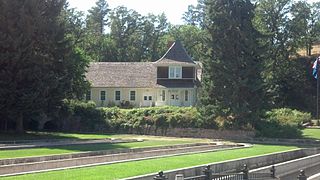
The D.C. Booth Historic National Fish Hatchery and Archives, also known as the Spearfish Fisheries Center or Spearfish Fisheries Complex and formerly known as the Spearfish National Fish Hatchery, is one of 70 fish hatcheries that were opened by the U.S. Fish and Wildlife Service as part of the National Fish Hatchery System. The hatchery was established near Spearfish, South Dakota in 1896, with the purpose of introducing and establishing populations of trout in the Black Hills of South Dakota and Wyoming. It is one of the oldest fish hatcheries in the United States and is the second-oldest in the American West. The hatchery spawns and releases about 20,000 to 30,000 rainbow trout each year. The hatchery doubles as a fisheries archive with the purpose of preserving records and early historical artifacts. It is listed on the National Register of Historic Places.
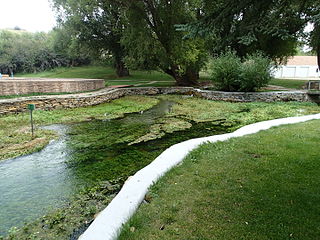
Big Spring Creek is a tributary of the Judith River in Fergus County, Montana near Lewistown, Montana. The creek originates from a first magnitude artesian spring approximately 6 miles (9.7 km) south of Lewistown and flows north, northwest for 30 miles (48 km) to its confluence with the Judith River. The spring is one of the largest in the world flowing at approximately 50,000 to 64,000 US gallons per minute out of the Madison-Limestone formation in the foothills of the Big Snowy Mountains. The creek flows through and under the town of Lewistown. For three blocks spanning Main Street, the creek runs underneath the town in a man-made channel that was created as the town was built over the creek. The spring provides Lewistown's water supply, which requires no treatment for use by consumers.

The Bennington Fish Hatchery, also known as the Bennington Fish Culture Station, is a state-operated fish hatchery at 110 Hatchery Road in Bennington, Vermont, USA. The station, the state's largest, produces a variety of trout, which are used to stock the state's water resources. Its facilities, dating to 1916, are listed on the National Register of Historic Places. The station has a visitors' center that is open daily.

Lansing Fisheries Building, also known as the Lansing Fish Hatchery/Lansing Fish Rescue Station, is a historic building located in Lansing, Iowa, United States. Lansing was long associated with fish rescue work along the Mississippi River. Fish would get caught in the backwaters and would suffocate when the water levels dropped or froze to death in the shallow waters in winter. Rescued fish would either be redeposited in the river or transported inland to stock streams and lakes by the State Fish and Game Warden.

The Salisbury Fish Hatchery is a state-operated fish hatchery on Vermont Route 53 in Salisbury, Vermont. Established in 1931, it produces broodstock trout for distribution to the other hatcheries in the state. Its facilities were listed on the National Register of Historic Places in 1994. The facility may be toured by arrangement, but there is no visitors center.

The St. Johnsbury Federal Fish Culture Station, also known as the St. Johnsbury Federal Fish Hatchery, was a United States government-funded fish hatchery on Emerson Falls Road in St. Johnsbury, Vermont. The hatchery operated from 1895 to 1960, producing fish stock for headwater tributaries of the Connecticut River and St. Lawrence River in northern New England and New York. The surviving facilities of the hatchery, now adaptively reused for other purposes and in private ownership, were listed on the National Register of Historic Places in 2005.
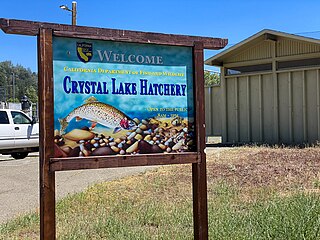
Crystal Lake Fish Hatchery is a fish hatchery run by the California Department of Fish and Game, located in Cassel, California.

The Maricao Fish Hatchery, also known as the Insular Fish Hatchery, is a historic 3.32 acre fish hatchery located along the Río Rosario in the Maricao Afuera district (barrio) of the Puerto Rican municipality of Maricao, within the Maricao State Forest jurisdiction. The hatchery is located at approximately 1,500 feet above sea level, 1.2 kilometers from downtown Maricao.





















